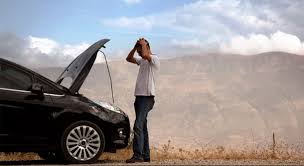New parents can have a lot on their minds. Faced with the new responsibilities and tasks that typically come with parenthood, some new parents can feel overwhelmed when it comes to important things like car seat selection, installation and proper usage.
But fear not; you’re not alone. Many new parents have similar concerns and ask the same questions when it comes to car seats. With that in mind, we asked car seat manufacturer Safety 1st for their answers to some questions commonly asked by new parents:
Where is the safest place to install a car seat?
Typically, the center rear seat is the safest place for a car seat, according to Safety 1st. Car seats should never be placed in the front seat. If possible, use the
LATCH (Lower Anchors and Tethers for Children) system to attach your car seat. LATCH is intended to make it easier to install a child seat properly without using vehicle safety belts. If your car does not have a LATCH connector for the middle seat, you can use the middle seat belt to properly secure the base. When installing, press down firmly on the car seat base and tighten the belt to make sure the base of the car seat moves no more than an inch from side to side.
How can I make sure my child’s car seat is installed correctly?
Before you hit the road, check in with a local Child Passenger Safety Technician (CPST) to help ensure your child’s seat is installed correctly. You can find a CPST by visiting either a local police station, fire station or Safe Kids Chapter for guidance. Or, simply go to
Seatcheck.org to find a child passenger safety seat inspection location near you.
How can I be sure my child is secure?
It’s very important to keep the harness snug on your child when in the car. Safety 1st suggests to test the snugness with the “pinch test.” If you pinch the harness straps at the shoulder and can gather material, it is too loose. Make sure to cinch it down.
When will my child be ready for a forward-facing car seat?
Children remain rear-facing until they’re 2 years old. The best practice is to keep children rear-facing as long as possible, up until they reach the maximum height and weight for the seat. Children are five times safer if they are rear-facing to age 2.
My older child hates using a booster seat. Is it really necessary?
If you have an older child, boosters can be extremely important as they help ensure that the car’s lap and shoulder belts are positioned in a way that can properly restrain them in the event of an accident. Many states
require a child to be in a booster until 8 years old as they have been shown to help reduce the risk of serious injury by 45 percent.
How long can I keep a car seat?
Car seats expire. Check the expiration date to confirm the seat is safe for your child. You can typically find the expiration date on the back or the side of the car seat.
My neighbor gave us a hand-me-down car seat. How do I know if it is safe for my child?
Used car seats should be avoided unless you have detailed knowledge and documentation of their prior use. Safercar.gov provides a
simple checklist to help you determine if a used car seat is safe. Has it been in a crash? Has it been recalled? Is it expired? For this reason, a used car seat should be avoided unless you are absolutely sure of its history.
Is it safe to use a car seat after it has been in a crash?
As mentioned above, once a car seat has been in a crash it should be discarded. Plastic can warp and materials can be damaged or structurally compromised.
How should I dispose of an old or damaged car seat?
To dispose of a car seat, check with your local waste management facility to see if they recycle number 5 plastic. Most importantly, please make sure the car seat is not used by another child. Safekids.org suggests that parents
discard an expired or damaged car seat by covering it with a dark trash bag so that it cannot be pulled from the trash and reused.
What should I do to make sure the inside of my car is safe for my child?
Just as important as safeguarding your home, don’t forget about the car. It’s important to help eliminate projectiles; anything in the car that is not secured can become a possible projectile. That could be a child’s toy, wet nap container, or a water bottle. In a crash, objects take on greater weight due to
crash forces. Also, make sure four-legged family members are properly restrained.
If you have additional questions regarding car seats and your child, consult the seat’s owner’s manual or visit Seatcheck.org to find a child passenger safety seat inspection location near you.










